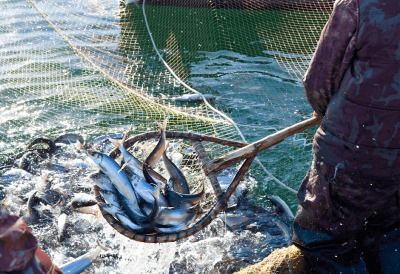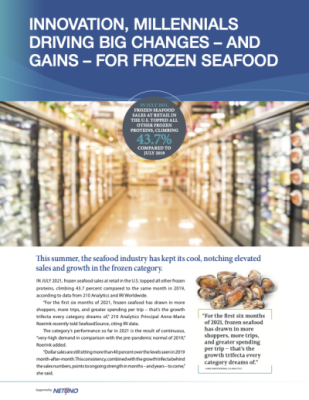Whitepapers
 Each year, Bristol Seafood publishes a scallop factbook that takes an in-depth look at the upcoming scallop season. It includes data from the last 70 years of scallop landings in the US, size trends over the previous 3 years, aggregate US scallop supply, and their perspective on the 2022
Each year, Bristol Seafood publishes a scallop factbook that takes an in-depth look at the upcoming scallop season. It includes data from the last 70 years of scallop landings in the US, size trends over the previous 3 years, aggregate US scallop supply, and their perspective on the 2022
 Is the word “fish” in your job description? Have you been tasked with researching and purchasing a fish skinner? Do you know what to look for when buying one? The mountains of processing materials available can be overwhelming and leave you confused about where to begin on the journey of finding the fish skinning solution best suited for your business. This download is here to help. Within, you’ll learn:
Is the word “fish” in your job description? Have you been tasked with researching and purchasing a fish skinner? Do you know what to look for when buying one? The mountains of processing materials available can be overwhelming and leave you confused about where to begin on the journey of finding the fish skinning solution best suited for your business. This download is here to help. Within, you’ll learn:
- Three key questions to
 Sharing fisheries and market knowledge is part of our commitment to our customers and partners. This transparency and exchange of information is a key way we support our customers’ growth. Bristol believes that the more our customers and we know about the market, the better we can navigate it together.
Sharing fisheries and market knowledge is part of our commitment to our customers and partners. This transparency and exchange of information is a key way we support our customers’ growth. Bristol believes that the more our customers and we know about the market, the better we can navigate it together.
This is our inaugural Haddock Market Factbook, where we share global haddock supply data from the last three decades, quota allocations,
… Read More
As the U.S. seafood industry adapts to the changes of the last two years, savvy companies recognize they can replicate their domestic success and increase their sales reach by turning to global markets. However, the key to an effective export strategy is data. This report will allow you to more effectively navigate international sales, including information on:
Market Performance
COVID-19 brought drastic changes to buying patterns around the
… Read More.png.small.400x400.png)
Every year Bristol Seafood publishes a Scallop Market Fact Book before the start of the North Atlantic Sea Scallop fishery season. It has been part of our commitment to partnership and transparency and is a key way we support our customers’ growth. Bristol believes that the more our customers and we know about the market, the better we can navigate it together.
This year has seen record-high scallop prices, incredible spikes in demand,
… Read More.jpg.small.400x400.jpg)
Operating a seafood business is about to become more complicated than it already is. Several government regulations have been recently proposed to enhance food safety in the U.S. while also aiming to curtail the sale of seafood harvested abroad in illegal, unreported and unregulated (IUU) fisheries. Unmasking potential food safety issues and IUU fishing requires transparency in the supply chain — where our seafood comes from, where it is
… Read More
For the first six months of 2021, frozen seafood has experienced “the growth trifecta every category dreams of,” according to 210 Analytics Principal Anne-Marie Roerink. It’s a dream that has been years in the making for the seafood industry, and one that is likely to last in a post-pandemic world as new and traditional retail channels diversify and global foodservice advances deeper into its recovery.
In this download,
… Read More.jpg.small.400x400.jpg)
As industry trends force seafood processors to reevaluate their strategies, data will play a critical role in their success in the coming decade. Companies can no longer rely on manual entry, collection, and analysis – by the time data has been sourced, it is no longer accurate. Without data, there is no telling if a company has veered off course nor what corrections need to be made.
Learn how to:
- Provide greater visibility into

Modern seafood processors must grapple with shifting consumer behaviors, tighter government regulations, shrinking margins, new technologies and the skills gap shortage. Yet, many are not prepared to deal with these new realities. This eBook Series will address:
- Changing consumer preferences toward transparency in processing
- Handling tighter regulations with technology
- Using data to your advantage
- How to manage mergers and

With a growing emphasis on sustainability impacting the seafood industry, improving the overall environmental impact of the supply chain and reducing waste grows more important every day. While effective at maintaining cold temperatures, foam is a major contributor of waste in the seafood supply chain and others and is said to take up 30% of landfill space overall. It is critically important that the seafood industry replaces foam with more
… Read More



